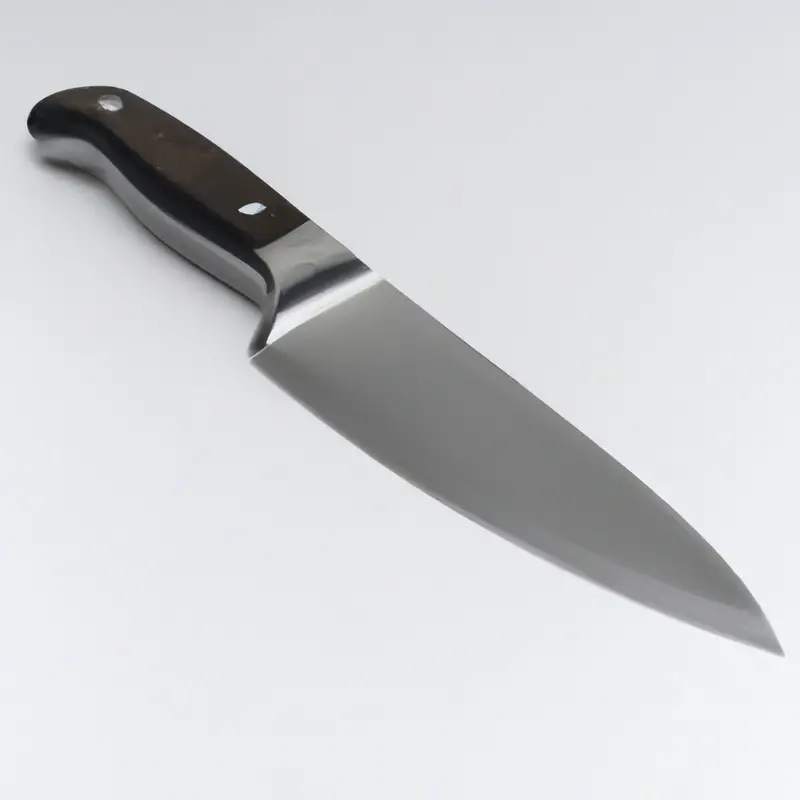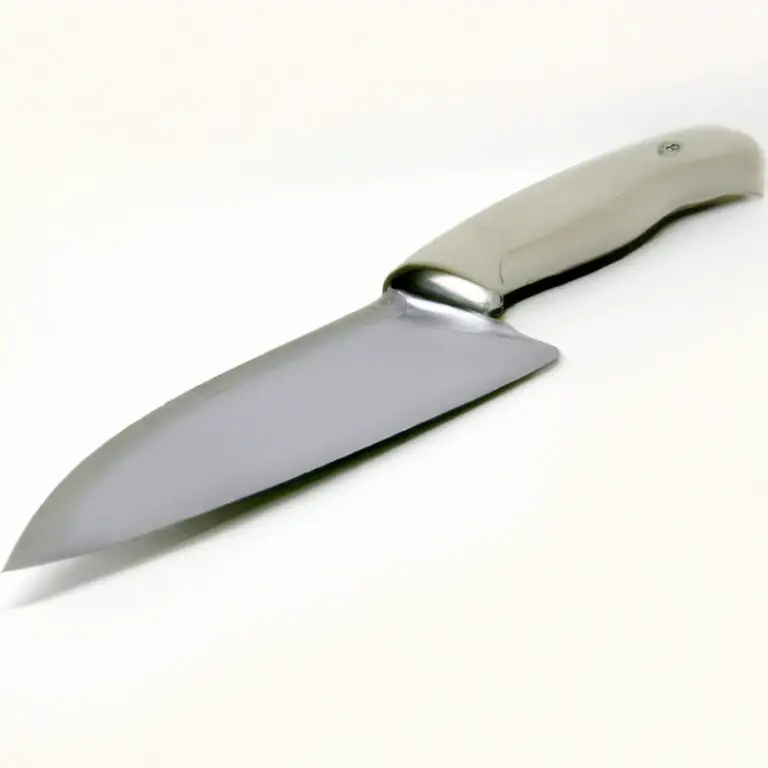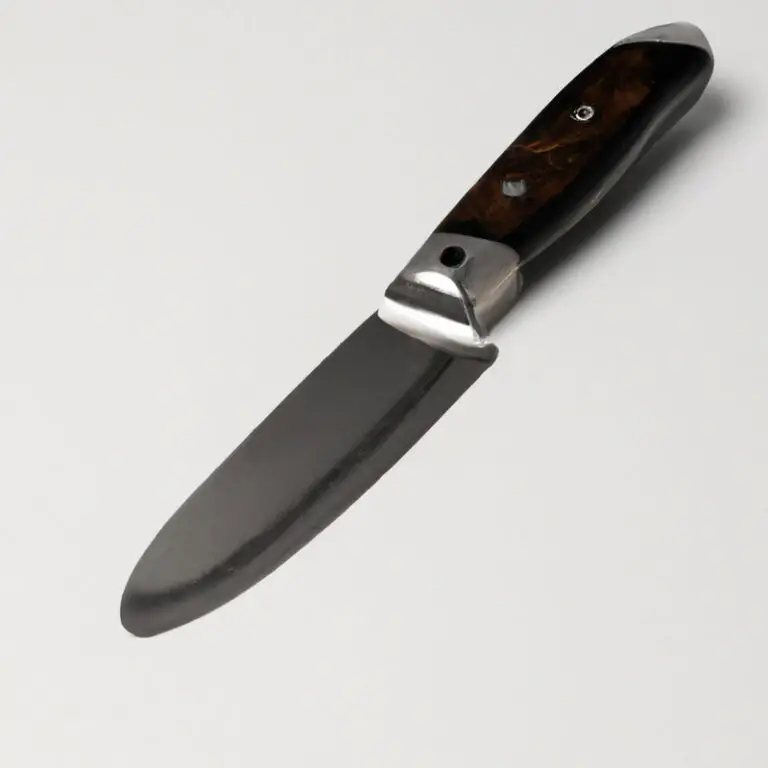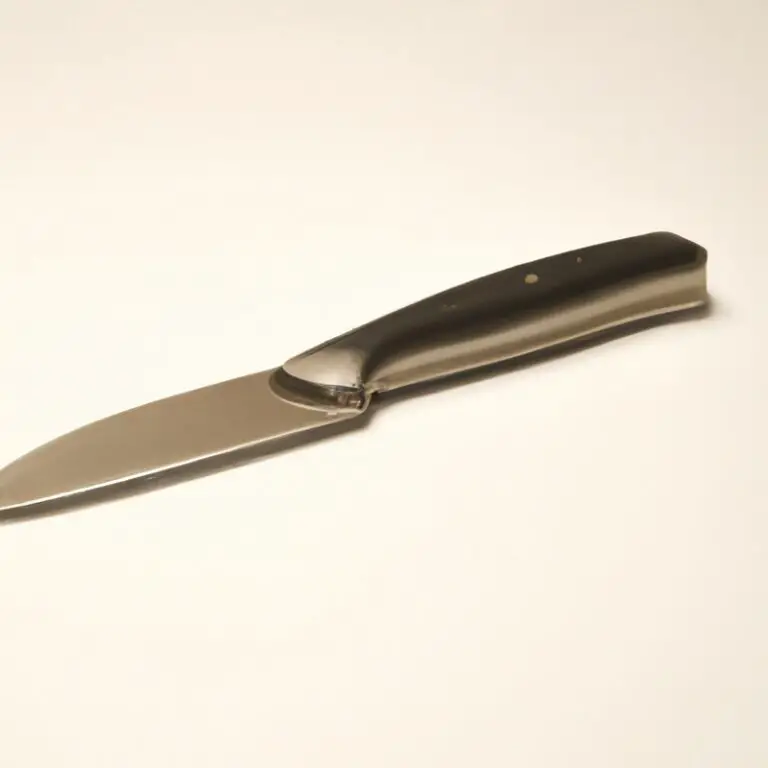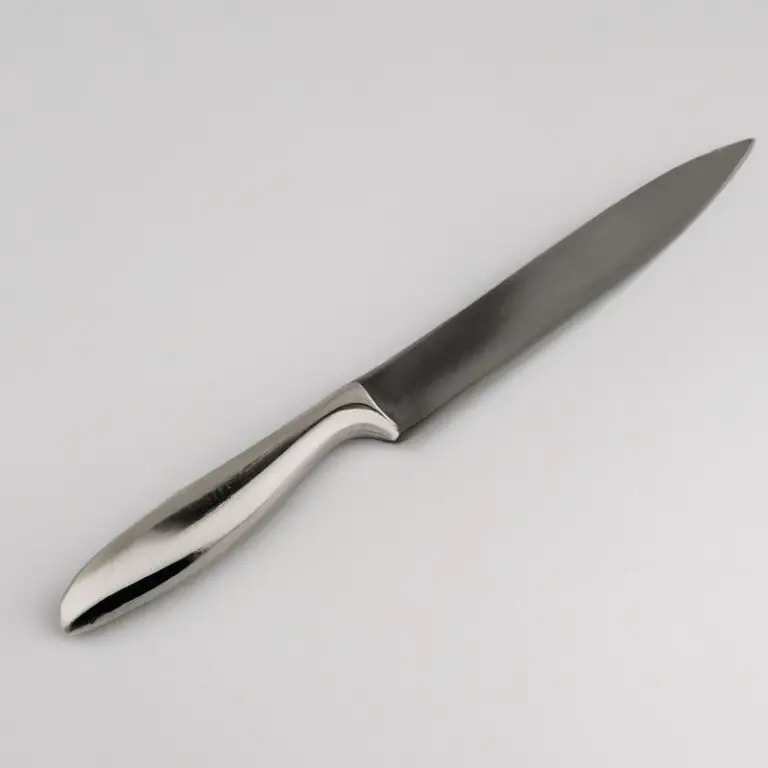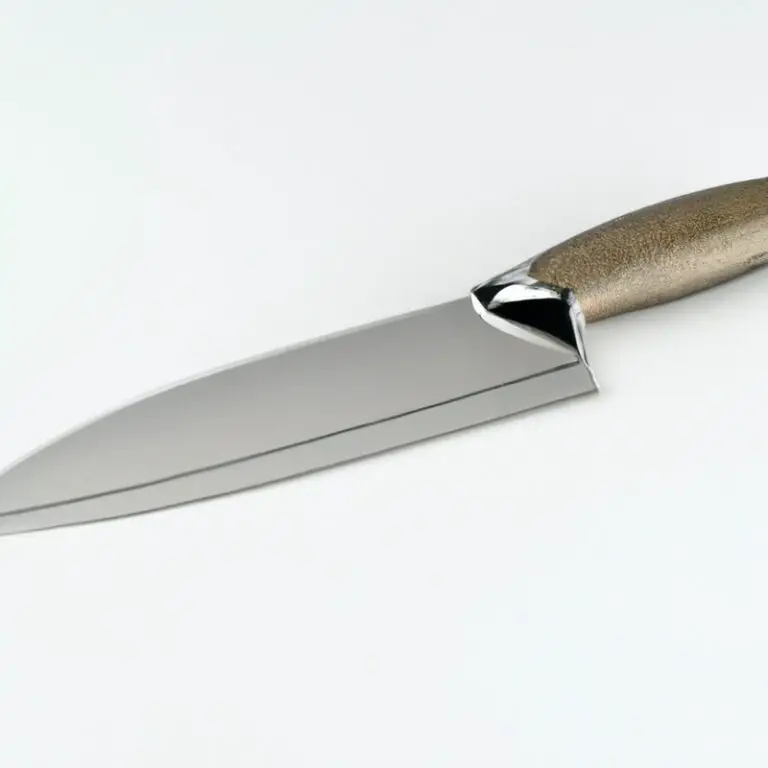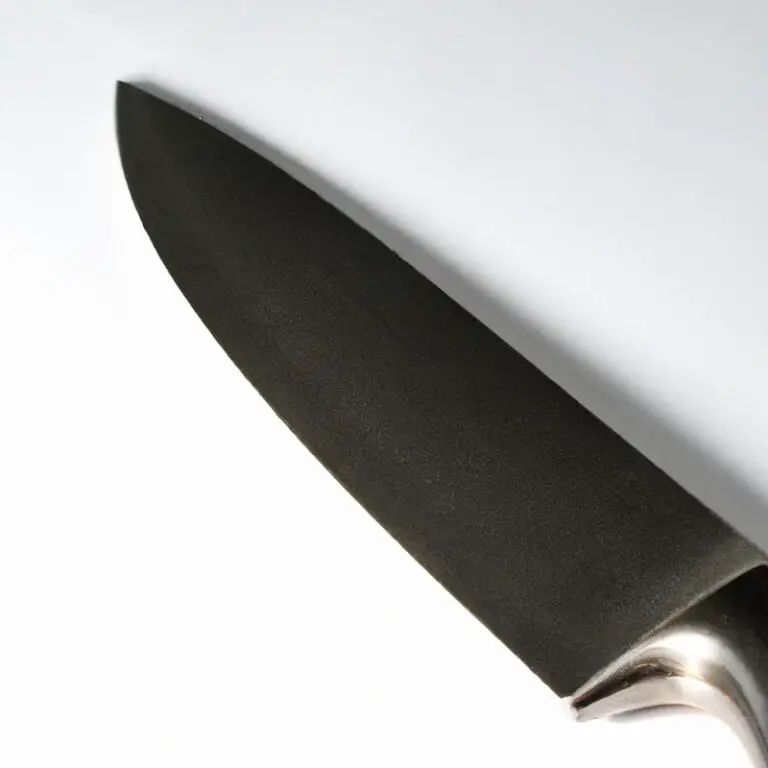How Do I Remove Tarnish From My Paring Knife? Sparkling Clean
Key Takeaways:
- Use a solution of equal parts water and vinegar to soak the knife for up to an hour.
- Apply a paste of baking soda and water to scrub away persistent tarnish.
- Avoid using abrasive materials like steel wool or harsh chemicals to protect the knife’s finish.
- Store the clean, dry knife in a sheath or protective cover to prevent further tarnishing.
Have you ever looked at your once shiny paring knife and noticed it’s developed a dull, discolored film? This pesky substance is called tarnish, and it’s a common issue for kitchen knives, especially those made of carbon steel.
But don’t fret! With the right techniques and products, you can easily remove tarnish and restore your knife to its former glory.
In this article, we’ll cover everything from how tarnish forms to expert tips for removing it. Get ready to say goodbye to tarnish and hello to a sparkling paring knife.
| Method | Materials | Steps | Effectiveness |
|---|---|---|---|
| Vinegar Solution | Vinegar, bowl | Soak knife in vinegar solution for 5-10 minutes, scrub with sponge or brush, rinse with water | Good |
| Baking Soda Paste | Baking soda, water, bowl | Mix baking soda and water to form a paste, apply to knife, let sit for 5-10 minutes, scrub with sponge or brush, rinse with water | Good |
| Lemon Juice Solution | Lemon juice, salt, bowl | Mix lemon juice and salt to form a paste, apply to knife, let sit for 5-10 minutes, scrub with sponge or brush, rinse with water | Fair |
| Tarnish Remover | Tarnish remover product | Follow manufacturer’s instructions | Excellent |
Understanding Tarnish: What It Is and How It Forms on Your Paring Knife
Tarnish is a layer of corrosion that forms on the surface of metals, including the blade of your paring knife. It is caused by the reaction of metal with oxygen, water, and other elements in the environment, such as sulfur and salt.
This chemical reaction leads to the formation of a thin layer of discoloration, which can appear brown, black, or green.
Tarnish not only affects the appearance of your knife, but it can also impair its functionality by weakening the blade. Understanding how tarnish forms on your paring knife can help you take preventive measures and strategize the best methods for removing it.
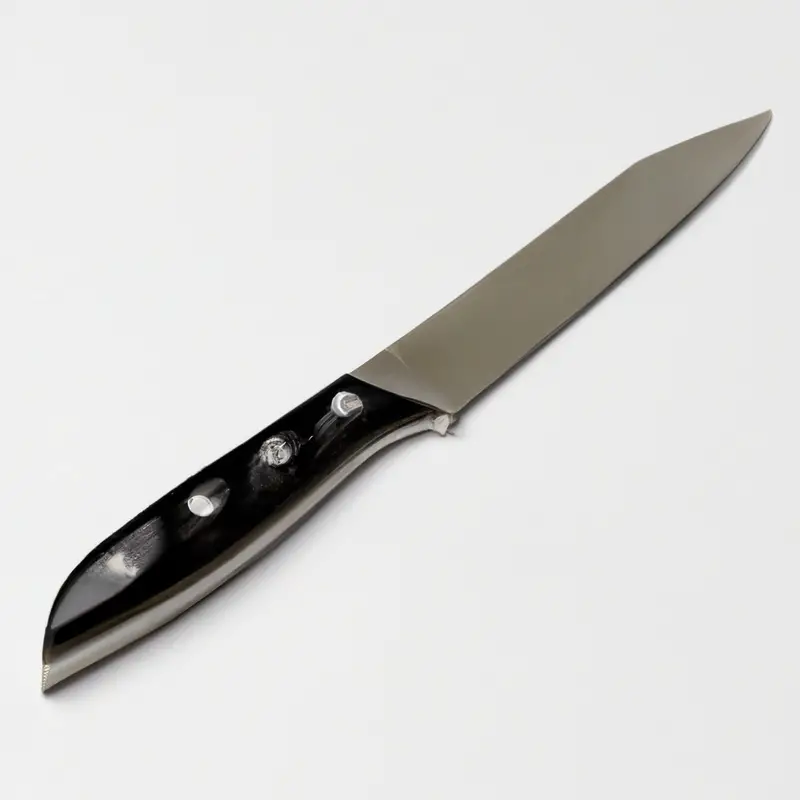
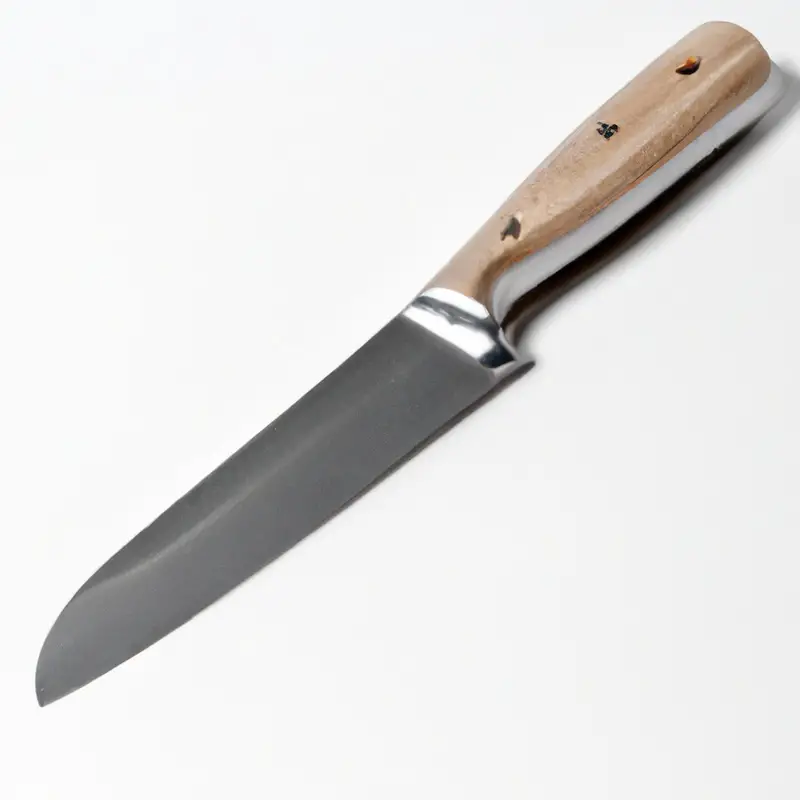
Pre-Cleaning Precautions: Preparing Your Paring Knife for Tarnish Removal
Before removing tarnish from your paring knife, you need to take some pre-cleaning precautions to ensure that you don’t damage the blade. Begin by washing your knife with warm, soapy water, and then dry it thoroughly.
Next, apply a small amount of olive oil or mineral oil to the blade to protect it from the tarnish removal process.
Let the oil penetrate the metal for about 10 to 15 minutes, wiping off any excess with a soft cloth. Once you’ve completed these pre-cleaning precautions, you’ll be ready to begin removing the tarnish from your paring knife.
Mild Methods: Removing Light Tarnish from Your Paring Knife
Mild tarnish on your paring knife can be removed using simple household items. Mix equal parts of baking soda and water to form a paste, then apply it to the tarnished area with a soft cloth.
Rub gently in a circular motion until the tarnish disappears.
Rinse the knife with warm water and dry thoroughly. Another option is to use white vinegar and salt.
Combine one tablespoon of salt with half a cup of white vinegar to create a mixture.
Soak the knife for 15 to 30 minutes in the mixture, then rinse with warm water and dry thoroughly. To prevent tarnish from returning, wipe your knife clean after each use and store it in a dry place.
Using a polishing cloth regularly will also help to keep your paring knife shiny and free from tarnish.
Intermediate Interventions: Eliminating Moderate Tarnish from Your Paring Knife
Intermediate interventions are the go-to methods for tackling moderate tarnish on your paring knife. One of the most effective techniques is to use a specialized knife cleaner, which you can purchase from a home goods or hardware store.
This cleaner contains gentle abrasives that can remove the tarnish while preserving the blade’s edges and finish.
Another effective intermediate intervention is the use of baking soda and water to clean the knife. Mix the baking soda with a small amount of water to create a paste and then use a soft cloth to apply the paste to the blade.
Leave the paste on the blade for a few minutes before rinsing it off and drying the knife completely.
This technique is best suited for knives that have minimal to moderate tarnish. For more stubborn tarnish, try using vinegar and baking soda.
Create a paste of baking soda and water, and then apply it to the blade.
Wipe the blade with a cloth moistened with vinegar, and then rinse the knife with warm water before drying it. Lastly, a combination of dish soap and warm water can also help remove moderate tarnish from your paring knife.
Simply mix some mild dish soap with warm water, and then use a soft sponge or cloth to wipe the blade gently.
Rinse the knife with warm water and dry it completely.
Heavy-Duty Approaches: Removing Stubborn Tarnish from Your Paring Knife
For tougher tarnish on your paring knife, heavy-duty methods are required. One option is to use a commercial metal polish, such as Flitz or Wright’s Silver Cream.
Apply a small amount to a soft cloth and gently rub the tarnished areas until the tarnish disappears.
Be sure to remove all of the polish residue and rinse the knife thoroughly with warm water and dry with a towel. Another option is to use a mix of baking soda and water to create a paste.
Apply the paste to the tarnished areas and use a soft-bristled brush to gently scrub the blade in circular motions.
Rinse the knife with warm water, dry thoroughly, and repeat if necessary. For extremely tough tarnish, you can use a specialized tarnish remover, such as Tarn-X or Hagerty’s tarnish remover.
These products contain harsh chemicals, so be sure to follow the instructions carefully and wear gloves to protect your skin.
Always rinse the knife thoroughly with warm water and dry with a towel after using a tarnish remover. It’s important to note that heavy-duty methods should only be used as a last resort and may potentially remove the protective coating on your knife.
Use these methods sparingly and always follow up with a mild cleaning method afterward to protect the knife.
Preventing Tarnish: Tips and Tricks for Keeping Your Paring Knife Shiny and Clean
To prevent tarnish from forming on your paring knife, it’s essential to properly care for and maintain it after each use. Here are some tips to help keep your knife shiny and clean:
- Hand wash your knife with mild soap and warm water immediately after using it. Avoid putting it in the dishwasher as this can cause damage and tarnish.
- Thoroughly dry your knife after washing it to prevent any moisture from causing tarnish.
- Store your knife in a dry, clean place. Avoid storing your knife alongside other metal items that could cause it to tarnish.
- Use a protective coating or oil on your knife to prevent tarnish. Many knife makers recommend using mineral oil or a food-safe wax to protect the blade.
By following these tips, you can help prevent tarnish from forming on your paring knife and keep it looking shiny and clean for years to come.
Best Products for Tarnish Removal: Products That Will Get Your Paring Knife Looking Brand New
There are several excellent products available for removing tarnish from your paring knife and restoring it to its former glory. Here are some of the best options:
- Bar Keepers Friend – This powder-based cleaner is great for removing tough stains and tarnish from metal surfaces. Simply sprinkle it on a damp cloth and rub the affected areas until the tarnish disappears.
- Flitz Metal Polish – This polishing paste is specifically designed for use on metal surfaces and is perfect for removing tarnish from your paring knife. Apply a small amount to a soft cloth and rub gently until the tarnish is gone.
- Wright’s Silver Cream – While it’s designed for silver, this cream-based cleaner also works wonders on brass, copper, and other metals. Apply a small amount and buff with a soft cloth until the tarnish is gone.
- Cape Cod Metal Polishing Cloths – These pre-moistened cloths are perfect for quick touch-ups and can be used on a variety of metal surfaces. Simply rub the cloth over the tarnished area until it shines.
No matter which product you choose, make sure to follow the instructions carefully and test it on a small, inconspicuous area first to ensure that it doesn’t damage your knife.
Embracing Patina: Should You Leave Tarnish on Your Paring Knife?
Embracing the patina on your paring knife is a matter of personal preference. Some people find it adds character and charm to their knife, while others prefer a shiny and polished appearance.
However, it is essential to note that patina does not harm the functionality of your paring knife.
Tarnish only affects the aesthetic appearance of the blade. If you decide to embrace patina, it is still crucial to keep your paring knife clean regularly.
Tarnish can attract moisture and lead to rust formation, which can compromise the blade’s performance and longevity in the long run.
Therefore, if you choose to keep the tarnish on your blade, be sure to keep it dry and clean. Ultimately, the decision to embrace patina or remove tarnish from your paring knife is up to you.
Consider how it aligns with your style preferences and the maintenance practices you’re willing to commit to.
Expert Advice: Tips and Recommendations from Professional Chefs and Knife Makers
Expert chefs and knife makers suggest using a mild abrasive solution to remove tarnish from your paring knife. They advise avoiding harsh chemicals and rough surfaces to prevent damage to the knife’s finish.
It is also important to use a soft cloth or brush to avoid scratches.
Additionally, regular cleaning and maintenance can prevent future tarnish buildup. Experts recommend using a knife oil or wax to preserve the knife’s shine and prevent rust.
Finally, they recommend embracing patina and allowing a small amount of tarnish to remain on your knife as it adds character and history to the tool.
Troubleshooting Your Tarnish Removal: Common Issues and Quick Fixes When Removing Tarnish from Your Paring Knife
Even with the most thorough cleaning methods, sometimes removing tarnish from your paring knife can hit a snag. Here are some common issues you may encounter and quick fixes to troubleshoot them:
- Streaks or Spots: If you notice streaks or spots on your paring knife after removing tarnish, it could be due to improper rinsing or incomplete drying. To fix this, rinse your knife thoroughly with hot water and dry it completely with a soft cloth.
- Scratches: Sometimes, using abrasive methods to remove tarnish can lead to scratches on your knife’s surface. To remedy this problem, try using a less abrasive method or a gentler cleaning solution.
- Persistent Tarnish: If your paring knife still has stubborn tarnish after cleaning, you may need to use a more heavy-duty approach. Try using a stronger cleaning solution or a specialized tarnish remover.
Remember to always follow manufacturer instructions and avoid harsh chemicals that could damage your knife. With these quick fixes, you can troubleshoot common issues and keep your paring knife looking like new.
Final Verdict
Removing tarnish from a paring knife can be a challenging task but with the right approach and tools, it can be accomplished with ease. Throughout this article, we have discussed various methods for removing tarnish from your paring knife.
Remember to take pre-cleaning precautions and consider using mild methods before jumping into intermediate or heavy-duty approaches.
Always use recommended products for tarnish removal and follow expert advice from professional chefs and knife makers. Additionally, embrace the patina and decide if you want to leave some degree of tarnish on your knife.
By doing so, not only will you ensure your knife has a long lifespan, but you’ll also save money on sharpening and protect your investment in the long term.
We hope this article provides practical insights and value to your kitchen routine.

